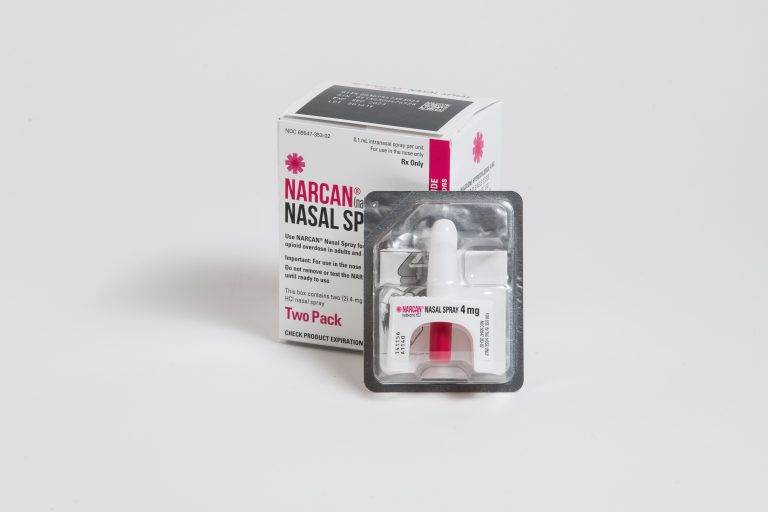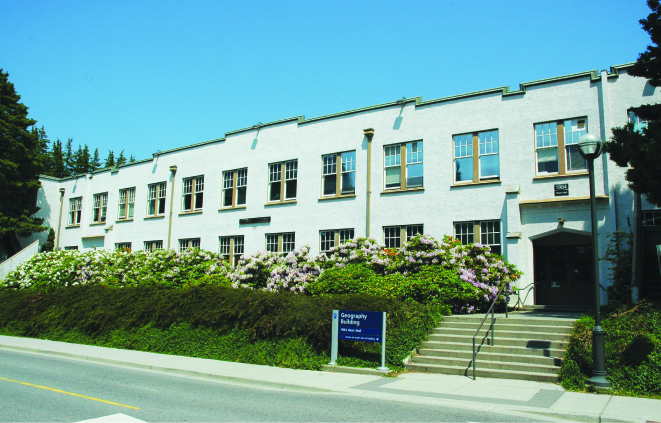New research published in BMC Public Health has modelled the likelihood of an individual surviving a drug poisoning event, depending on what geographic region of British Columbia they are in.
Conducted in partnership with the BC CDC, and led by UBC Geography graduate student Kevin Hu, the study aimed to identify regions suffering from disproportionate risk due to service access inequity. The rationale being that most service provision is currently focused on urban areas.
Using modelling based on case data captured by the overdose surveillance system in British Columbia from 2015 – 2018, the team found that the odds of fatal overdose were about 30% higher in rural areas than in large urban centres, with some regions reporting odds 50% higher than others.
Communities in Northern B.C. and the Interior were found to be at highest risk.
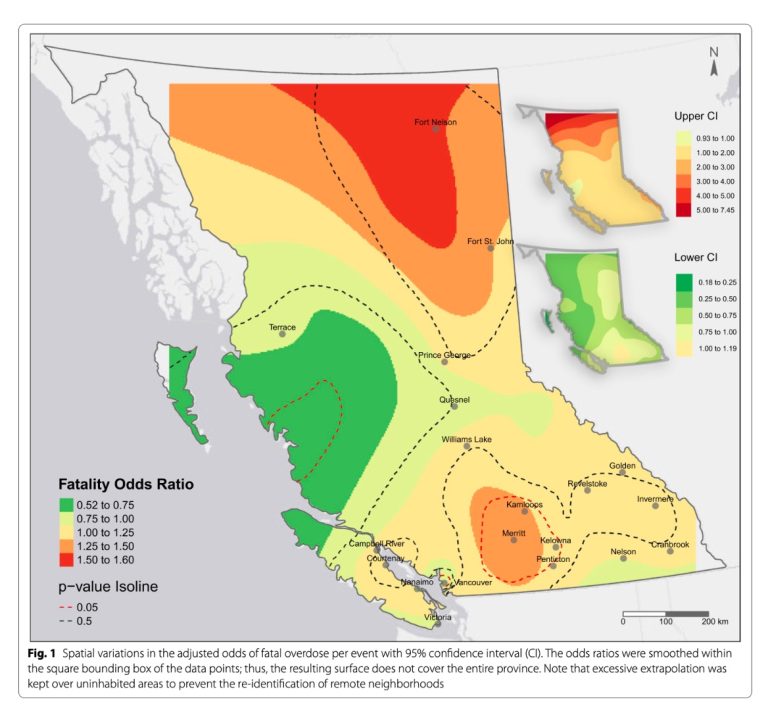

The study also looked at urban areas and found that in Vancouver, Victoria, Kelowna and Prince George, risk was lower in communities with active harm reduction sites, and greater in those without.
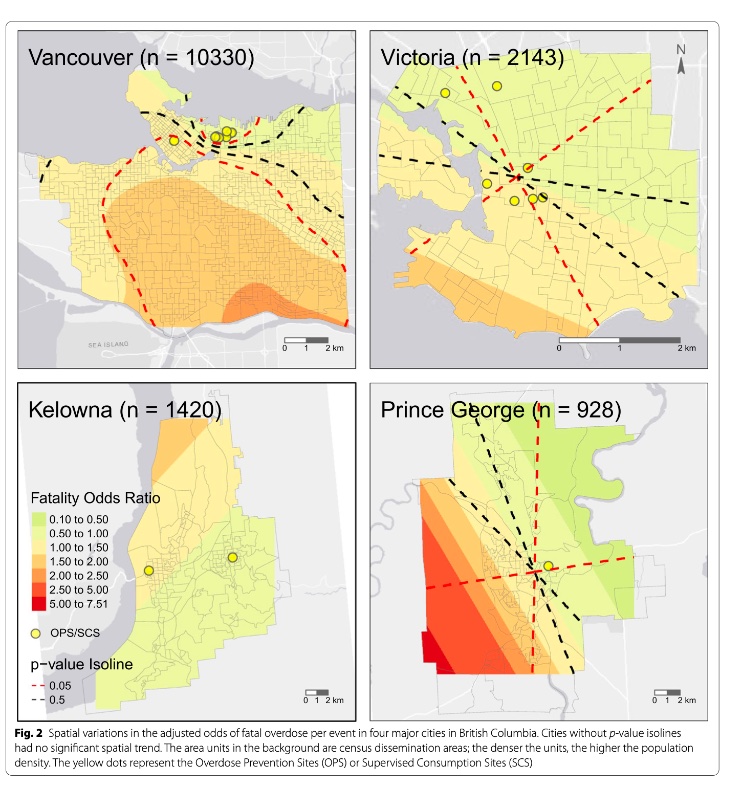

Contamination by fentanyl was shown to be a prominent factor in drug poisoning deaths, with risk steadily increasing as the supply became contaminated from 2015 onwards.
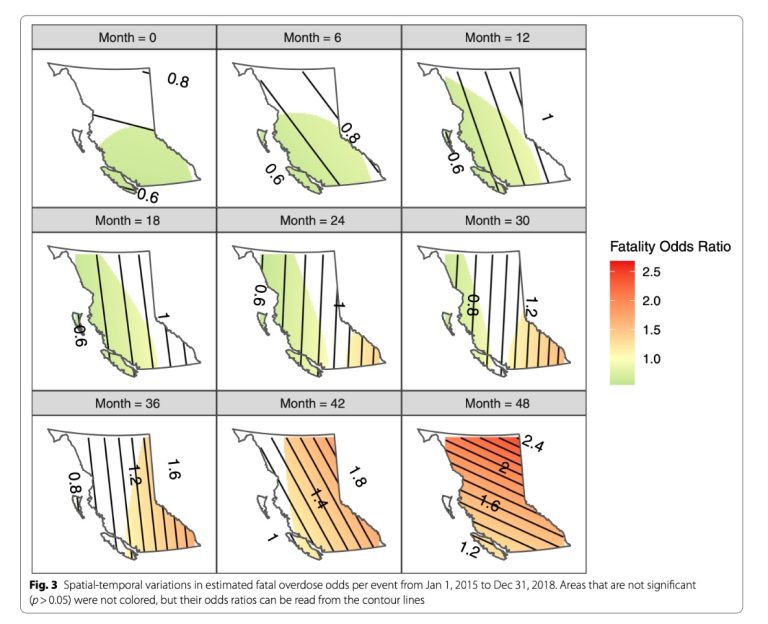

This data reinforces the calls from many communities, researchers and public health figures for the urgent expansion of safe supply and an associated strategy to reduce fatalities.
